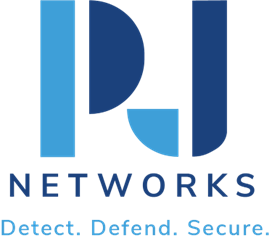Building Resilience Against Ransomware Threats
Ransomware, recovery, incident response, disaster recovery, and backups are more critical than ever in building resilience against the rise of aggressive ransomware attacks. Let’s dive into what ransomware is all about and explore real-world cases, how to prepare for and recover from such attacks, and what solutions exist to protect your business.
Introduction to Ransomware
You might have heard about ransomware, but what exactly is it? Simply put, ransomware is malicious software (malware) that encrypts your files and demands payment for their release. Imagine you can’t access important business data unless you pay a ransom. Small disruption? Think again! It can bring businesses to their knees.
These attacks are getting more sophisticated. Attackers might email you a link that seems legitimate, but it’ll install ransomware on your network the moment it’s clicked. And often, these attackers demand cryptocurrency payments, making it harder to trace them. We can’t ignore this; ransomware is a major threat.
Real-World Attack Cases
Let’s look at some real-world scenarios. In 2017, the WannaCry ransomware attack affected thousands of businesses in over 150 countries. Critical systems were locked, causing massive disruption. Then came NotPetya, targeting businesses with yet another destructive blow.
An unfortunate example closer to recent times: a healthcare provider was targeted. Their systems were down for days, causing delays in patient care and financial losses. And remember, these are just a few examples. Many businesses don’t even publicize such incidents due to fear of reputation damage.
Preparing for and Recovering from Ransomware
You might be asking, How do we stand against this? Preparation is your best defense. Recovery, your best outcome. Here’s how to build resilience and be ready:
- Regular Backups: Keep frequent backups of your critical data. Store these backups offline, away from your main network. This is your lifeline to restore function without paying a ransom.
- Incident Response Plan: Have a plan ready. Who does what in case of an attack? Knowing roles and actions reduces panic and downtime.
- Employee Training: Your team is your first line of defense. Train them on recognizing phishing attacks and safe online practices. One wrong click can open the gates.
- Software Updates: Keep all systems and software updated. Regular updates patch vulnerabilities that ransomware can exploit.
- Network Segmentation: Segment your network. This limits ransomware spread if it manages to breach entry. Think of it as containing a fire.
Unfortunately, no matter how prepared you are, sometimes recovery is inevitable. In such cases, having a robust disaster recovery plan is key:
- Know Your Data: Identify what is critical. Prioritize what needs the fastest recovery during an incident.
- Business Continuity Plan: Understand how you’ll continue to operate even with systems down. Alternate methods or manual processes might bridge gaps temporarily.
- External Support: Have partners you can rely on, like cybersecurity experts and legal counsellors, who can help smoothen the process.
Ransomware Protection Solutions
Thankfully, we are not alone in this fight. As ransomware evolves, so do our defenses:
- Advanced Threat Protection (ATP): Embrace solutions that integrate AI to detect and block threats in real-time.
- Endpoint Detection and Response (EDR): These tools monitor and respond to security threats at endpoints like computers and mobile devices.
- Cloud-Based Security: With many businesses moving to the cloud, using services offering robust security measures is a step in the right direction.
- Email Security: Since many attacks begin with an email, implement strong email filters and anti-spam measures.
Having these solutions in place helps, but continuous monitoring and improvement of your cybersecurity posture is crucial. Threats evolve, and so should your protection measures.
Ransomware, recovery, incident response, disaster recovery, and backups – these essentials can’t be overlooked. Building a resilient business against ransomware threats is possible, and it begins with informed decisions and proactive strategies.
